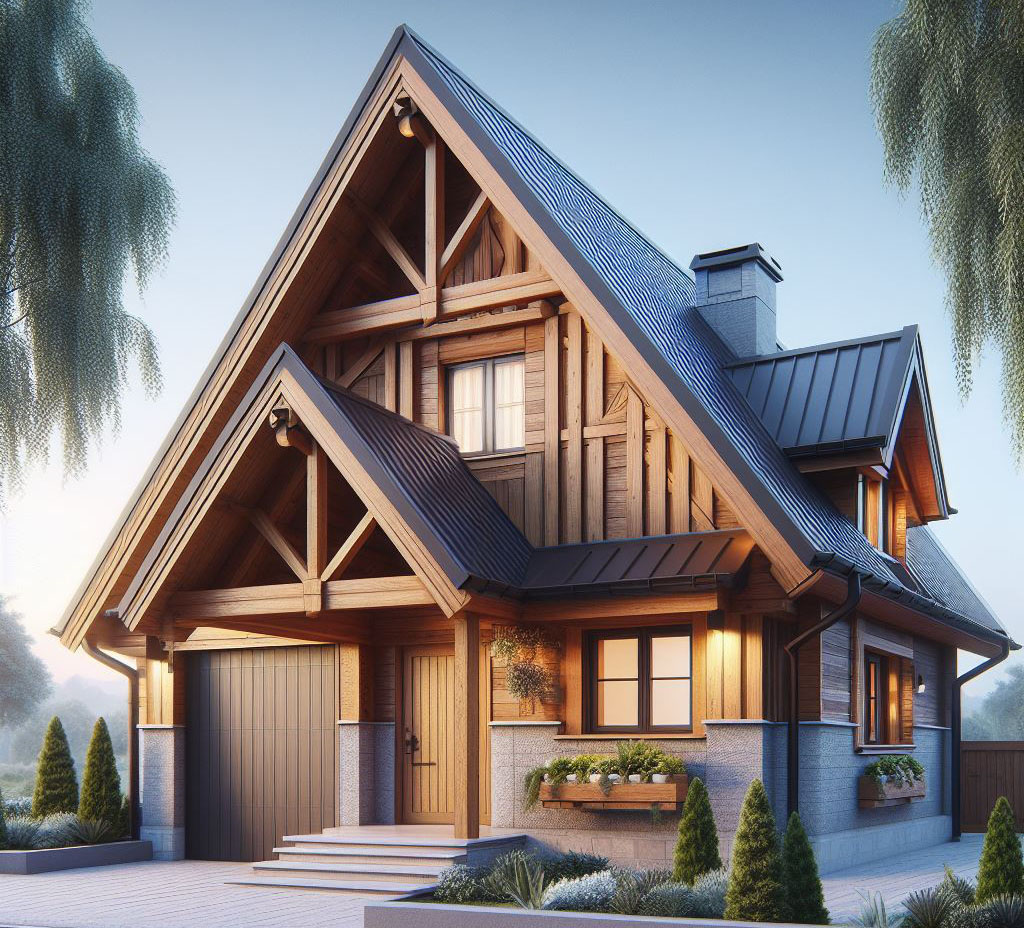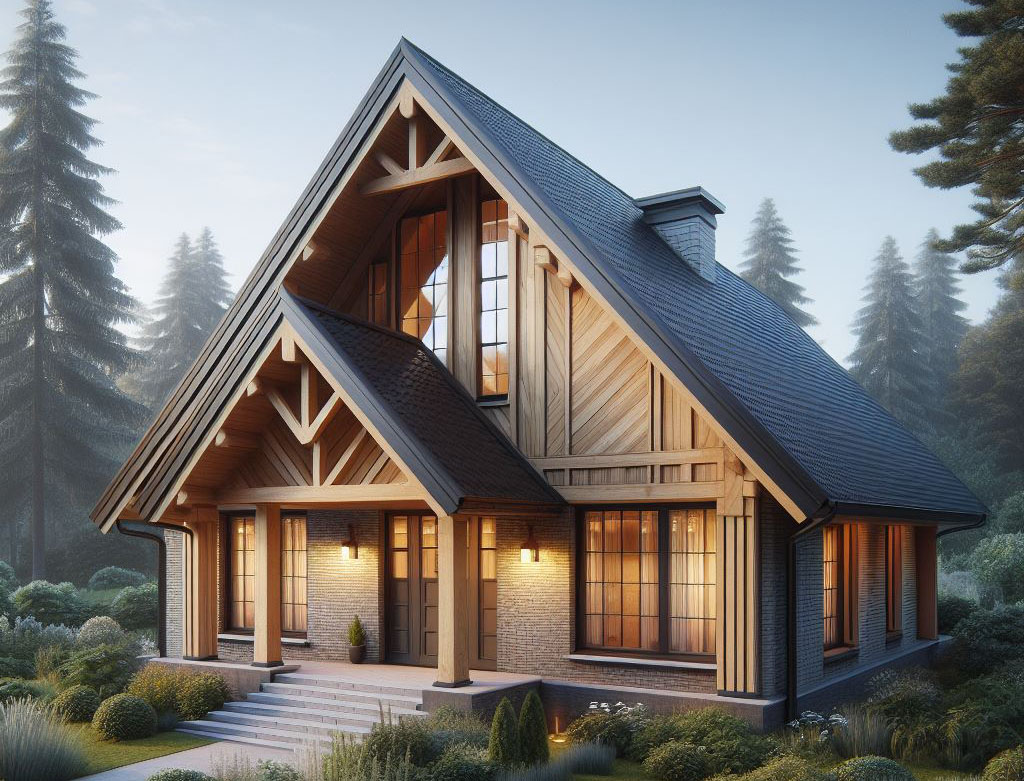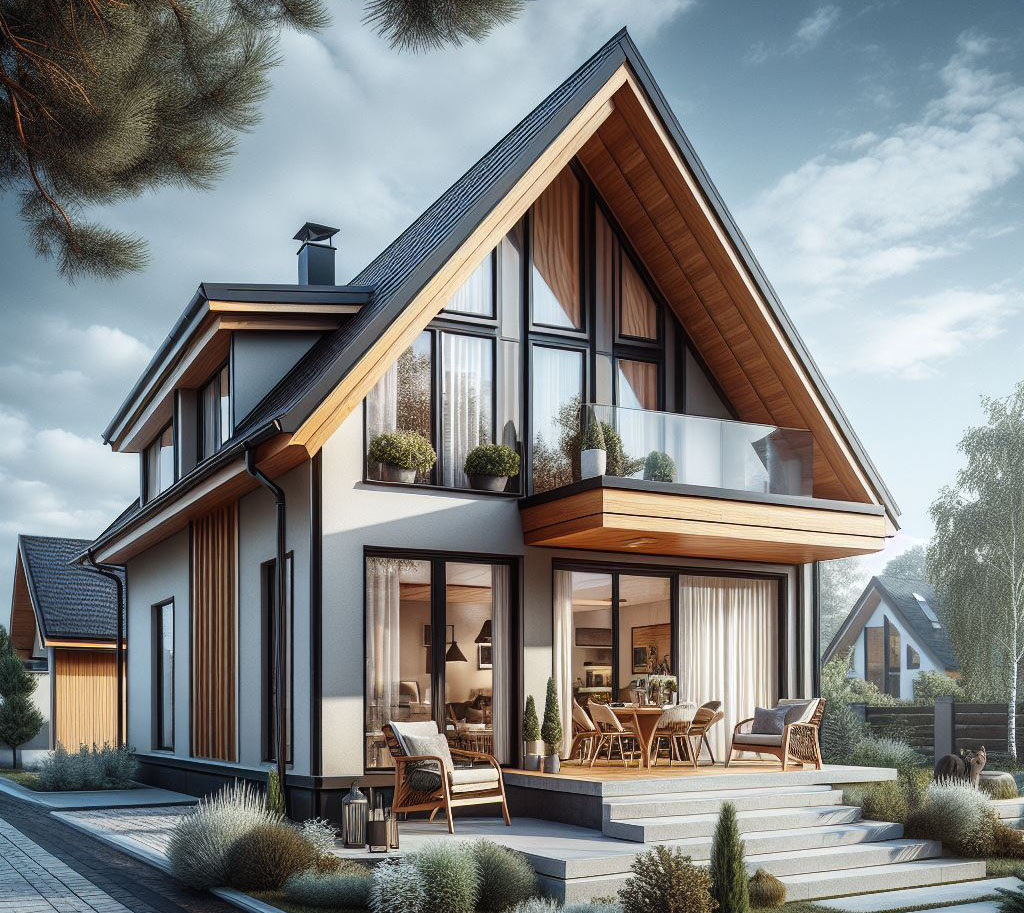In the vast landscape of construction and renovation, certain elements stand as pillars of design and functionality. Among these, the gable holds a place of honor, bridging centuries of architectural tradition with the modern pursuit of beauty and efficiency. These triangular features do more than cap a home, they narrate stories of architectural evolution, from quaint thatched cottages to the sleek, angular roofs of contemporary dwellings.
Beyond their aesthetic allure, gables serve to deflect water and snow, while offering the added boon of extra attic space or vaulted ceilings, marrying form with function in a manner few other architectural elements can boast. In the realm of modern construction, the gable remains not merely a nod to tradition but a functional asset, lending individuality to a home while addressing practical needs.

What is a Gable, Anyway?
Imagine standing before a dwelling, gaze drawn upward to where the roof peaks. That triangular segment framed by the sloping roof on either side and the wall beneath? That’s the gable. It’s the architectural equivalent of a welcoming smile, offering both a protective overhang and a chance for aesthetic expression.
At its core, a gable comprises a few key components: the ridge, the apex where two roof planes meet, the eaves, where the roof extends beyond the wall, often sheltering the home’s siding and windows from rain, and the gable ends, the vertical triangular sections that seal off the space between eaves and ridge. Each plays a critical role in the gable’s function and form, from supporting the roof structure to offering potential spaces for windows, vents, or decorative elements.

Diving Into Types of Gables
My years on the job have acquainted me with a wide array of gable styles, each suited to different architectural visions and practical needs. Here’s a closer look at the most prevalent types:
- Box Gables: The quintessential gable, characterized by its straightforward design—a triangular end wall capped by a sloping roof. Its simplicity lends itself to a broad spectrum of housing styles, making it a staple in residential construction.
- Cross Gables: Where complexity meets creativity, cross gables feature intersecting rooflines that add architectural interest and space. This style suits homes with more intricate floor plans, offering opportunities for additional windows and natural light.
- Front Gables: A salute to the Colonial, front gables face the street, often embellishing the home’s entrance. This style emphasizes the gable as a focal point, enhancing curb appeal and inviting a closer look.
- Dutch Gables: A harmonious blend of the hip roof’s all-encompassing slopes and the traditional gable’s peak, Dutch gables provide both aesthetic charm and practical benefits, like increased attic space and efficient rainwater runoff.

The Role of Gables in Home Design
Gables, often perceived as merely an aesthetic touch, are fundamental to the architectural integrity and functionality of a home. Their influence extends well beyond the immediate visual appeal, deeply impacting both the livability and efficiency of a residence.
Architectural Aesthetics: The visual impact of gables on a home cannot be overstated. They serve as a defining feature, capable of transforming the mundane into the magnificent. A well-designed gable can complement the architectural style of a house, enhancing its character and curb appeal. It’s akin to selecting the perfect accessories for an outfit, where the right choice can elevate the entire ensemble. Whether aiming for the sharp, contemporary lines of a modern home or the quaint, inviting appeal of a cottage, gables offer a versatile palette for expression.
Functionality and Practicality: Beyond their aesthetic value, gables play a critical role in the home’s environmental management. They facilitate effective ventilation, allowing hot air to escape and reducing the reliance on artificial cooling systems. Additionally, the strategic design of a gable roof promotes efficient water runoff, safeguarding the home against leaks and water damage. This practical aspect ensures that the home remains comfortable and secure in varying weather conditions.
Energy Efficiency: Gables also contribute significantly to a home’s energy efficiency. Properly insulated and ventilated gable roofs can help maintain a stable indoor temperature, minimizing the need for heating in winter and cooling in summer. This synergy between design and nature not only enhances comfort but also reduces energy consumption and costs.

Construction Considerations for Gables
The construction of gables involves a blend of artistic vision and technical precision. Each decision, from material selection to compliance with regulations, shapes the final outcome.
Materials: The choice of materials for constructing gables is crucial, with options ranging from traditional wood to modern vinyl and enduring stone. Each material offers distinct advantages and aesthetic qualities. Wood provides classic beauty but requires maintenance to withstand the elements. Vinyl offers durability and ease of maintenance, often replicating the appearance of more expensive materials. Stone, while more costly and labor-intensive, adds unmatched texture and strength to the structure. The selection process should consider both the architectural style of the home and the practical aspects of maintenance and longevity.
Design Challenges: Integrating gables into the overall design of a home requires careful consideration. The goal is to achieve harmony between the gable and the existing architectural elements, ensuring a cohesive and appealing exterior. This involves matching the pitch, materials, and detailing of the gable with those of the main structure, avoiding any visual discordance. The design process often demands creative solutions to align the gable with the home’s aesthetic while addressing practical considerations such as lighting and ventilation.
Building Codes and Regulations: Navigating the complexities of building codes and regulations is a fundamental part of designing and constructing gables. These rules vary by location and can influence various aspects of the gable’s design, from dimensions to materials. Adherence to these guidelines ensures the safety and legality of the construction, requiring thorough research and often consultation with local building authorities. This step is essential to avoid costly modifications or legal issues, emphasizing the importance of planning and compliance in the construction process.

Maintenance and Repair of Gables
Maintaining the structural integrity and aesthetic appeal of your home’s gables is not just about preserving its looks, it’s about safeguarding your investment. Through years of renovations and countless projects, I’ve seen firsthand the critical role that regular maintenance plays in the longevity of gables.
Inspection and Maintenance: An annual inspection is a cornerstone of gable upkeep. This isn’t about a quick glance, it’s about a thorough review, seeking out signs of wear and tear that can lead to bigger issues down the line. Look for signs of distress in the roofing materials, inspect the flashing for proper sealing, and ensure that the gutters are free of debris. Such diligence can preempt water intrusion, which is a gable’s worst enemy.
Repair Tips: When repairs are needed, prompt action is key. For minor issues like a few displaced shingles, a DIY approach can be effective. However, more complex problems, especially those involving structural damage or persistent leaks, demand professional intervention. It’s crucial to trace the leak’s source, which may not always be directly above the visible damage, due to water’s tendency to travel along unexpected paths.
Gables and Home Improvement
Enhancing your home with gable modifications can not only elevate its aesthetic but also its market value. Yet, such endeavors must be approached with a blend of creativity and caution.
Adding or Modifying Gables: Altering a home’s gables is a significant architectural change. It demands a clear vision and an understanding of how these alterations will harmonize with the existing structure. This is a task where the insights of a professional can be invaluable, ensuring that any additions are in line with the home’s architectural integrity and local building codes.
Impact on Home Value: Thoughtfully designed gables can transform a property’s facade and functionality, making it stand out in the real estate market. Whether it’s enhancing the home’s character or creating additional usable space under the roof, strategic improvements to gables can significantly increase a property’s appeal and value.
FAQ Section
The inclusion of gables offers aesthetic enhancement, improves roof drainage, augments attic space, and can boost energy efficiency, making them a multifaceted asset to any home.
The choice should be informed by the architectural style of your home, the local climate, and your aesthetic and functional preferences. It’s about finding a balance that complements your home’s design while addressing practical needs.
Absolutely, but such modifications require thorough planning and compliance with local building codes. The guidance of an architect or builder can ensure that the addition enhances the home without compromising its structural integrity.
A routine inspection at least once a year, or following severe weather events, is advisable to identify and address any potential issues before they escalate.
The market now offers materials like fiber cement siding, which combines durability with aesthetic flexibility, and innovative designs such as solar gables, which can enhance a home’s energy efficiency.
